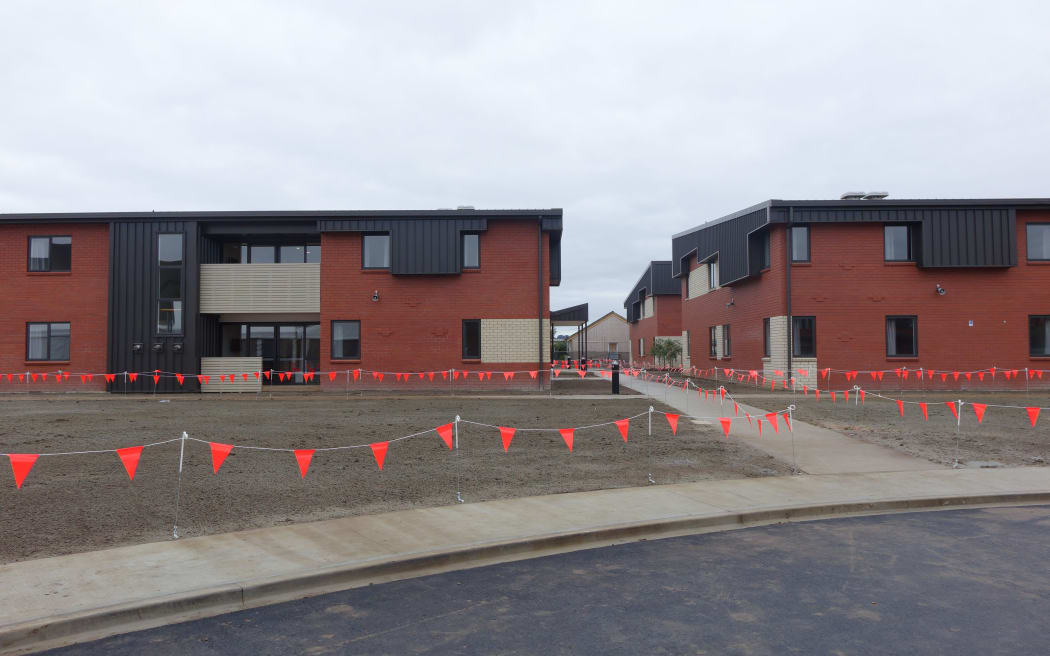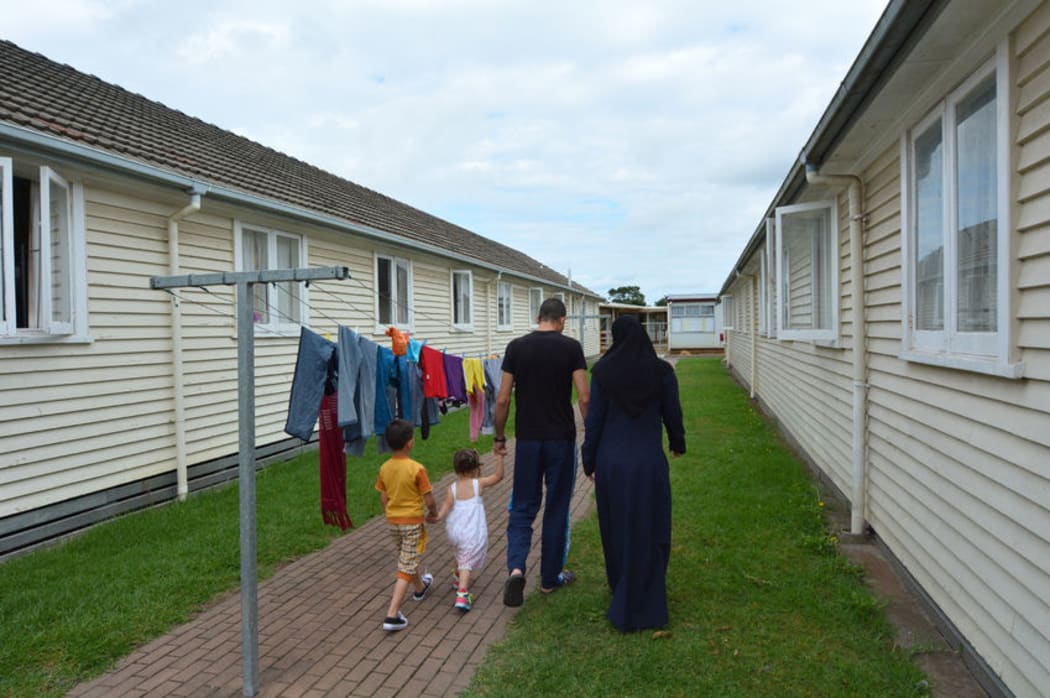Every refugee to New Zealand spends six weeks at Mangere Refugee Resettlement Centre, which reopened last June last year after a 25 million dollar rebuild.
Up to six intakes of about 170 people are taken straight off the plane to the centre each year.
Zac Fleming and cameraman Nick Monro visited as the latest intake - 164 men, women and children - prepared to move on.
Refugees are different from migrants, having been uprooted from their home with no choice or planning in the matter, and their sense of loss is very strong.
On arrival, they are offered medical help - both physical and mental given the horrors most have endured in their life before - then settle in to learn about their new country.
There are security cameras and the gates are locked, but that's to keep people out, not in.

Refugees outside at the Mangere Refugee Resettlement Centre. Photo: AFP
Everyone has their own key card, they can leave whenever they want, and they can even stay elsewhere overnight if they give notice.
Now, they have to learn to be New Zealanders, so all - from the youngest, to the oldest aged about 72 - go to school, run by AUT.
It's a full school day for everyone for all six weeks, 9am to 3pm.
Senior lecturer Maria Hayward is the education centre's director and tries to replicate the average Kiwi classroom - whatever that means - but the majority of time spent is on learning English.
"Almost every one of our students speak either no English or very little English, and they also speak probably one of 12 different languages in one classroom" Ms Hayward says.
The current intake came from Afghanistan, Bhutan, China, Colombia, Ecuador, Ethiopia, Iran, Myanmar, Pakistan, Palestine, Somalia, Sudan, and Syria.
"So they can't even communicate easily with one another when they're in the group, and so the medium for teaching needs to be English. So if we're teaching maths, for example, we teach it in English to children that speak very little English."
She says the routine helps them feel like they're in a normal, safe environment.
The refugees are housed in a mix between flatting and backpacker style accomodation.

The rebuilt Mangere Refugee Resettlement Centre. Photo: RNZ / Mani Dunlop
There are six blocks with four apartments in each, with four bedrooms per apartment and a basic shared lounge and kitchen.
The bedrooms are small but big enough to not feel claustrophobic, and everyone has access to the outdoors.
It's the small things, though, that make you realise a lot of thought has been put into all this. After their time here, when each refugee moves into society and their own home, they're given the same furniture they had in the centre.
One night a week, they have a theme evening bringing everybody together to with the cooks and cook their national meals.
At the end of their six weeks it all comes full circle, back to the school hall-style room where they were first received with a pōwhiri.
On Friday, this intake will head out into New Zealand and try to live a normal life.
They will do their best to learn English and our customs and culture. Most qualify for social housing.

A Syrian refugee family at the Mangere Refugee Resettlement Centre. Photo: 123RF
They'll go to Auckland, Waikato, Manawatu, Wellington, Nelson, and Otago. Immigration will do their best to make sure everyone leaves to a job.
Ms Hayward says it's important he community welcome them in.
"Be welcoming, you know, to be able to say welcome to people who werent welcomed in the country they fled."
"To come to a new place, it's really important we say welcome and we mean it."

